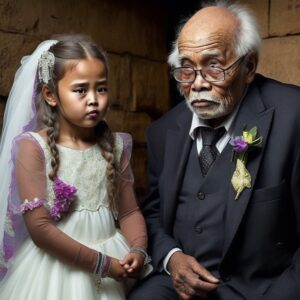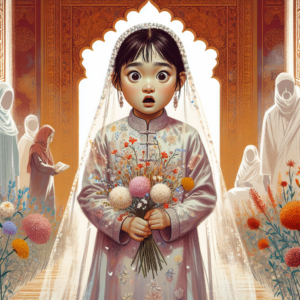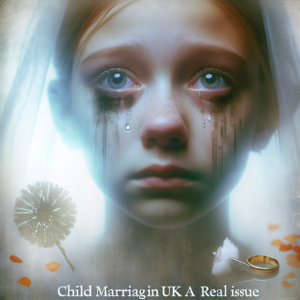Understanding the Prevalence and Consequences of Child Marriage
Introduction
Child marriage is a pervasive issue that affects millions of girls around the world. It refers to the marriage or union of a child under the age of 18 years, and often involves girls marrying much older men. This practice is deeply rooted in cultural, religious, and socioeconomic factors that have significant consequences on the lives of these young girls. This article aims to shed light on the prevalence of child marriage, its consequences, and the efforts being made to address this humanitarian crisis.
Prevalence of Child Marriage
Child marriage is a global problem, affecting countries across the globe, but it is particularly prevalent in some regions. According to UNICEF, approximately 12 million girls are married before the age of 18 each year. Statistics reveal that over 650 million women and girls alive today were married as children. In sub-Saharan Africa, one in three girls is married off before her 18th birthday, while in South Asia, nearly half of all girls are married before 18. However, child marriage is not limited to these regions alone; it exists in countries across the Middle East, Latin America, and even in developed nations.
Factors Influencing Child Marriage
Several factors contribute to the prevalence of child marriage. Poverty is a key factor, as families in impoverished communities often see child marriage as a solution to economic hardships, with the bride’s family receiving a dowry or financial support from the groom’s family. Traditional gender roles and societal norms that perpetuate girls’ subordinate status also play a significant role. Cultural and religious beliefs, as well as lack of education and awareness, further fuel child marriage.
Consequences of Child Marriage
Child marriage has profound physical, psychological, and social consequences for young girls. They are often forced to leave their homes, drop out of school, and assume adult responsibilities at a young age, denying them the opportunity to pursue education, fulfill their potential, and participate fully in society. Girls who marry early often face increased risks of domestic violence, sexual exploitation, and early pregnancies, which pose serious health risks, as their bodies are not fully developed. These young brides also typically have limited decision-making power within their households and are exposed to greater economic vulnerability.
FAQs about Child Marriage
Q: Are boys affected by child marriage?
A: While child marriage predominantly affects girls, there are cases where boys are also subjected to early marriage. However, the prevalence of child marriage is significantly higher among girls.
Q: Is child marriage legal anywhere in the world?
A: Laws governing the minimum age of marriage vary across countries. Although many countries have set the minimum legal age for marriage at 18, legal loopholes, social norms, and lack of enforcement contribute to the continuation of child marriage.
Q: Can child marriage be seen as a violation of human rights?
A: Absolutely. Child marriage is a clear violation of human rights, depriving individuals of their rights to education, health, and freedom from violence and exploitation. It perpetuates gender inequality and undermines efforts to achieve sustainable development goals.
Q: What efforts are being made to address child marriage?
A: Organizations such as UNICEF, The United Nations Population Fund (UNFPA), and Girls Not Brides are actively working to end child marriage. They focus on advocating for policy changes, empowering girls through education, providing healthcare services, raising awareness, and engaging communities in dialogue to change social norms.
Q: Can education help prevent child marriage?
A: Education is a crucial tool in preventing child marriage. When girls are educated, they are more likely to delay marriage, have fewer children, and contribute positively to their communities. Education empowers girls and helps break the cycle of poverty and gender inequality.
Conclusion
Child marriage continues to be a significant humanitarian crisis affecting millions of girls worldwide. It is a complex issue deeply rooted in social, cultural, and economic factors. The consequences of child marriage are far-reaching, denying young girls their rights, compromising their health, and perpetuating gender inequality. However, efforts are being made to address this issue, with a focus on education, awareness, and changes in policy and social norms. It is crucial for individuals, communities, and governments to work together to eradicate child marriage and provide a brighter future for every child.















